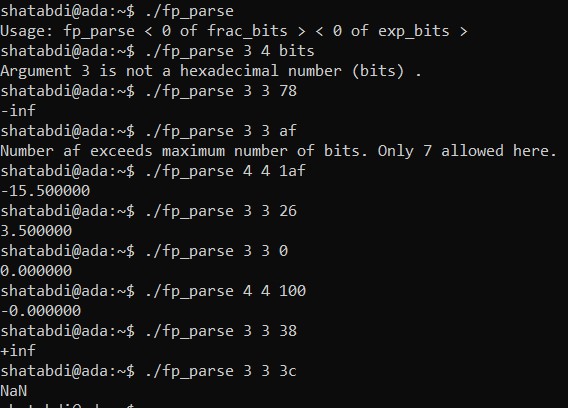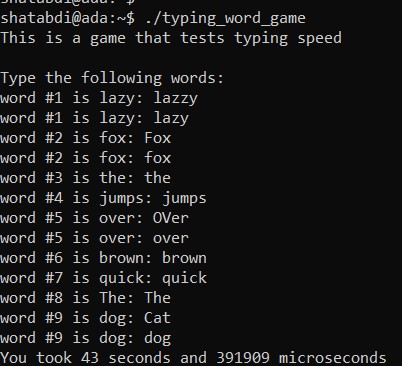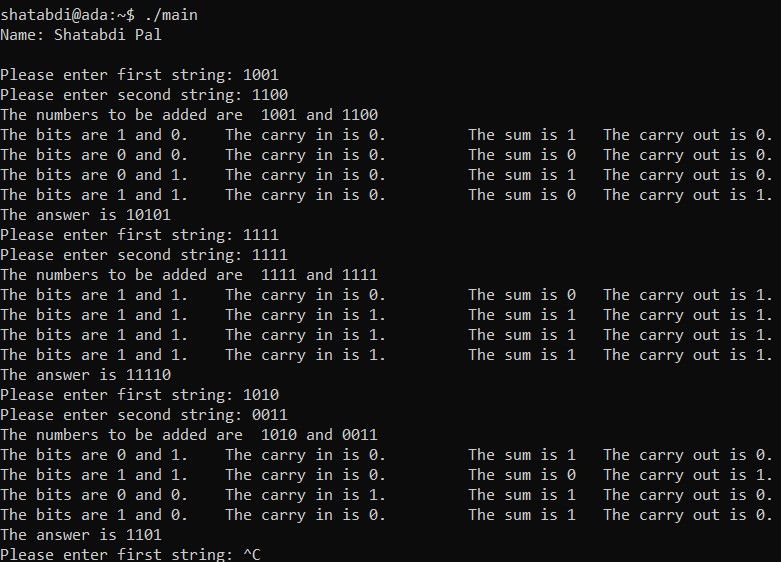Implementation of an IEEE floating point parser
This program will take 3 arguments. The first argument is the number of fraction bits between 2 and 10. The second argument is the number of exponent bits (k) between 3 and 5. The third argument is the hexadecimal number that user want to parse.The program will print out the floating point value associated with the given bit pattern. For example, the excution of "fp_parse 4 4 a8" will produce and output 12.0. The IEEE FP represents numbers in the form of V = (-1)s * M * 2E, where s is sign bit: 1 == negative, 0 == positive, M is the significand, a fractional number and E is the, possibly negative, exponent.
Find codeImplementation of a game to test a user's typing speed
The game randomly chooses words from an array of strings containing "The", "quick", "brown", "fox", "jumps", "over", "the", "lazy", "dog". Each word must appear exactly once. The program should output the time it takes for the user to correctly enter the entire array of words. If the user incorrectly types a word, the program would prompt the user to retype the incorrect word.
Find codeImplementation of full adder circuit
A full adder is a combinational circuit that performs an addition operation on binary numbers. The full adder takes three inputs and produce two outputs. The two outputs are Sum and Carry. This program takes two input string(for example 1111 and 1011) and checks for string validity. It generates sum of these two inputs and produce the sum and carry.
Find code

